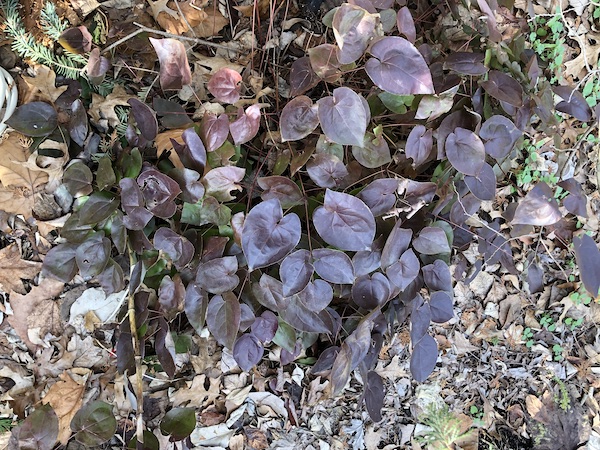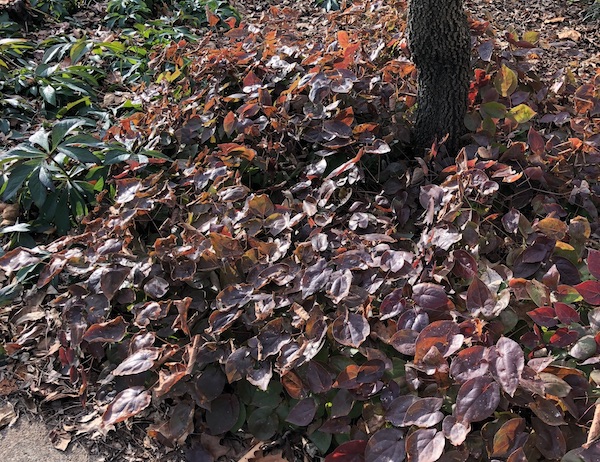When heading out the other day to walk my dog Autumn (it’s hard to stay indoors when the temps are in the 50s or even the 60s), I spied a plant blooming.
No, it wasn’t a hellebore, although I poked among those plants to see if there was anything yet. There wasn’t.
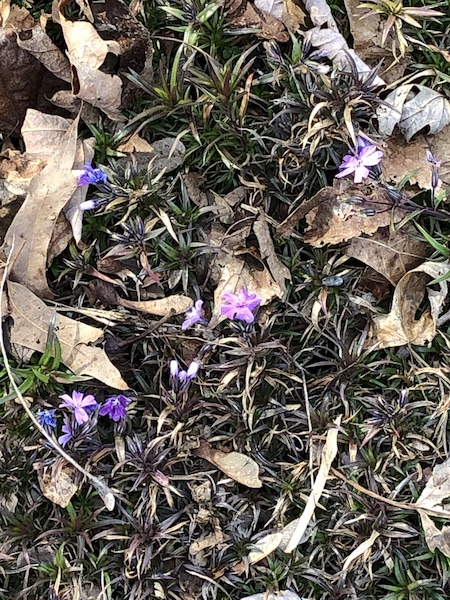
Down at the end of my driveway, under the address sign, a half dozen or so purple flowers color the creeping phlox (P. subulata). I first noticed them the last few days of December as I was carting the trash can to the street. They have survived in this spot that gets covered in snow when I shovel the drive.
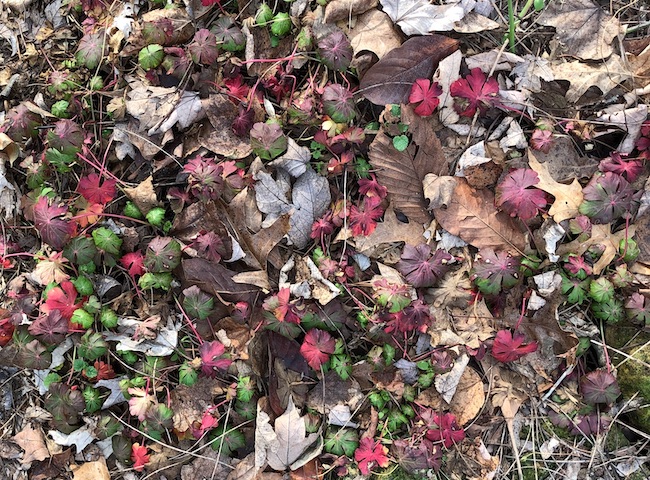
Just a few steps away, the leaves on ‘Biokova’ hardy geranium retain their fall color, noticeable even though a tree’s leaves cover the perennial.
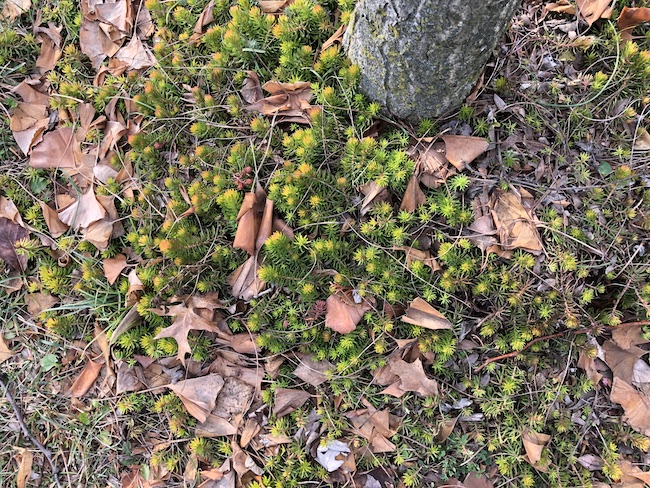
Winter color is usually a term used for plants with berries, interesting bark and evergreens. Creeping phlox is an evergreen, as are hellebores and ‘Angelina’ sedum. ‘Biokova’ geranium and epimedium would probably be considered semi-evergreen. However we tag them, I appreciate their unexpected beauty this time of year.
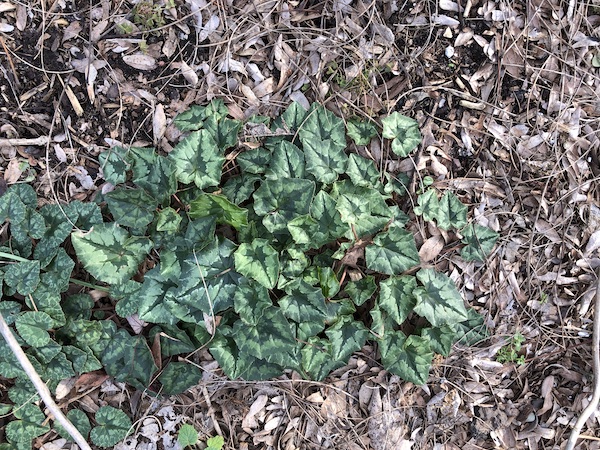
I hope you take a few minutes to walk your yard to uncover its unexpected beauty.
